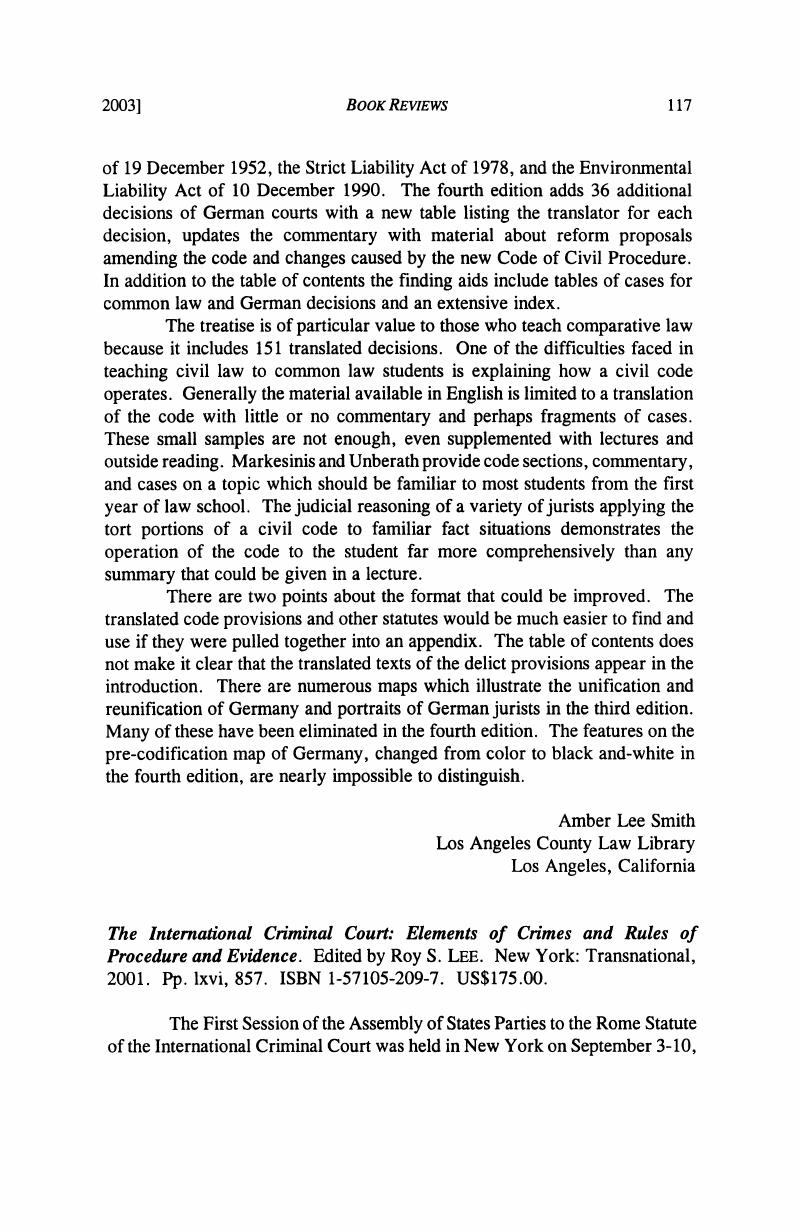No CrossRef data available.
Article contents
The International Criminal Court: Elements of Crimes and Rules of Procedure and Evidence. Edited by Roy S. Lee. New York: Transnational, 2001. Pp. lxvi, 857. ISBN 1-57105-209-7. US$175.00.
Published online by Cambridge University Press: 28 February 2019
Abstract
An abstract is not available for this content so a preview has been provided. Please use the Get access link above for information on how to access this content.

- Type
- Book Reviews
- Information
- Copyright
- Copyright © 2003 by the International Association of Law Libraries
References
2. Report. Official Records of the Assembly of States Parties to the Rome Statute of the International Criminal Court. First Session. U.N. Doc. ICC-ASP/1/3 and Corr.1 (3-10 September 2002).Google Scholar
3.
Id. at 5, para. 22.Google Scholar
5.
The International Criminal Court: The Making of the Rome Statute. (Lee, Roy S., ed. 1999).Google Scholar
6. The “Key Terms and References” section includes the following six parts: I. Specific Bodies, Organs and Terms; II. Draft Statutes and Draft Rules of Procedure and Evidence; III. Reports; IV. Working Groups; V. International Criminal Tribunals; VI. International Legal Instruments.Google Scholar
7. “The Making of the Elements of Crimes” and “General Principles of Criminal Law and Elements of Crimes.”Google Scholar
8. The Rules of Procedure and Evidence are organized into the following twelve chapters: 1. General Provisions; 2. Composition and Administration of the Court; 3. Jurisdiction and Admissibility; 4. Provisions Relating to Various Stages of the Proceedings; 5. Investigation and Prosecution; 6. Trial Procedure; 7. Penalties; 8. Appeal and Revision; 9. Offences and Misconduct Against the Court; 10. Compensation to an Arrested or Convicted Person; 11. International Cooperation and Judicial Assistance; 12. Enforcement.Google Scholar




